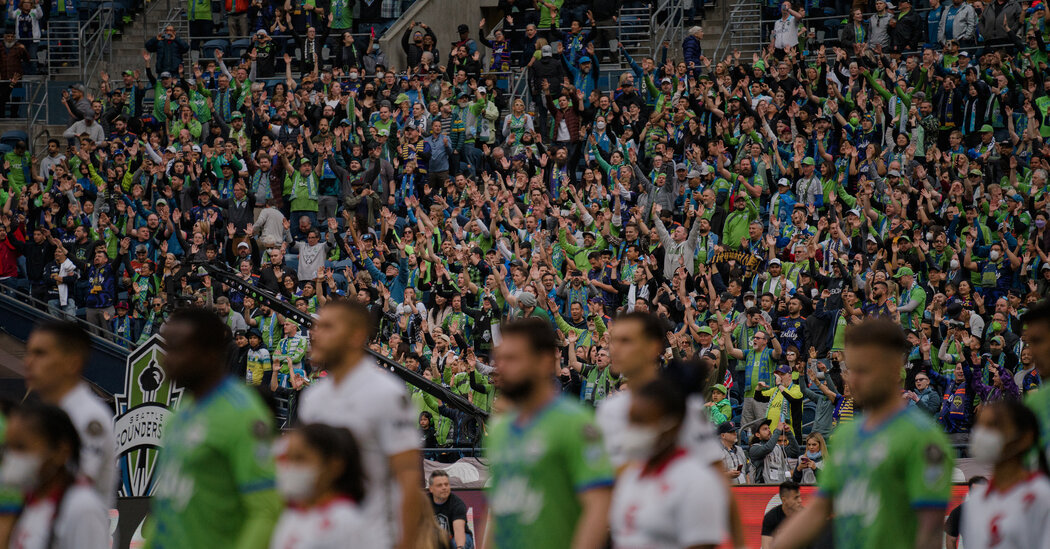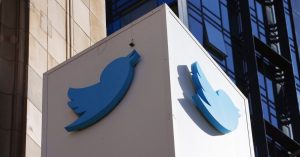
SEATTLE — Everything broke right for the Sounders, who were prodded for nearly two hours of grinding action by a sea of Seattle fans in blue and green who pushed their trademark electric energy to the pitch.
This was history — and it felt like a joint effort between a team and its supporters.
For over 20 years, no Major League Soccer team had ever won the Concacaf Champions League tournament, which includes the best teams from the United States, Canada, Mexico, Central America and the Caribbean. But the Sounders ended the drought with a Pacific Northwest downpour: a 3-0 win over the Pumas of Mexico on Wednesday.
How important was the win?
During this week’s run-up to the match, Sounders General Manager Garth Lagerwey called it a chance at soccer immortality.
In a promotional hype video, none other than the retired Seahawks icon Marshawn Lynch called it a “big (expletive) game.” At halftime on Wednesday, with the Sounders ahead 1-0, M.L.S. Commissioner Don Garber stood in his suite at Lumen Field, looked me steadily in the eye, and called this match the “the biggest game in the history of the league.”
Since its inception in 1996, M.L.S. has sought to become an American league of such quality that it could stand toe-to-toe with world powers. But until now, failure was a regular right of passage for M.L.S. in this annual tournament, with teams from the rival Mexican league having won the last 13 Concacaf tournaments.
Well, the Sounders buried those failures on Wednesday.
Initially the match was choppy and bogged down by physical play that forced a pair of key Sounders, João Paulo and Nouhou Tolo, to leave with injuries. But Seattle flashed its trademark resilience. Goalie Stefan Frei, named the tournament’s most valuable player, backed up a stout defense, and Sounders kept up the attack until forward Raul Ruidiaz scored on a deflected shot late in the half. In the 80th minute, Ruidiaz added another goal off a smooth counterattack.
Nicolas Lodeiro sealed victory with a goal in the 88th minute and ran toward the stands to celebrate among a frenzy of fans.
Winning qualifies the team for the FIFA Club World Cup, a tournament stacked with soccer royalty. The Premier League’s Chelsea won it last. Either Liverpool or Real Madrid will represent Europe next. Just being in the same draw as teams of that pedigree is entirely new for M.L.S.
It’s fitting, then, that the Sounders will lead the league to this new precipice. Since entering M.L.S. during a wave of expansion in 2009, they have enchanted this soccer-rich city by winning two M.L.S. Cup championships in four runs to the finals. Seattle has led the league in attendance in all but two seasons, with area fans bringing the same fervor to Lumen as Seahawks fans have come to be known for. Maybe more. A tournament record 68,741 fans showed up to watch the home team play the Pumas. On a Wednesday night.
How did Seattle become an American soccer behemoth?
There is no single answer. Part of it is the city’s history of embracing the unconventional and cutting edge — which still describes professional soccer in the American sports context. Seattle birthed Boeing and Microsoft, Starbucks and Amazon. It gave the world grunge rock and Quincy Jones. Jimi Hendrix went to high school three miles from Lumen Field. Bruce Lee sharpened his martial arts skills just a short walk away.
One of its great works of art is a troll sculpture that sits underneath a bridge. It’s become customary to drape it in a mammoth blue and green Sounders scarf before big games.
The love felt by this city for soccer in all its forms — from the Sounders to O.L. Reign of the N.W.S.L., to colleges and junior leagues — is also the product of a specific past and a specific team: the original Seattle Sounders of the long-defunct North American Soccer League.
From 1974 to 1983, those Sounders teams were part of the first bona fide effort to bring big-time professional soccer to North America.
If you ask me, a Seattle native who grew up in that era, I say the love began, specifically, with a single game.
Since I was 9 years old I’ve called it the Pelé Game. That’s when I took a city bus downtown to watch that original iteration of the Sounders. The date was April 9, 1976, the first sporting event ever held at the now-demolished Kingdome.
A crowd of nearly 60,000, then the largest in North American soccer history, watched Seattle host the star-studded New York Cosmos and its leader, the greatest player the game of soccer has ever seen: Pelé. The Black Pearl, as he was known, had come to the N.A.S.L. to celebrate a last stanza of his career — and as an ambassador to spark the game in North America. I don’t remember details of that match as much as I remember being in awe of the lithe and powerful Brazilian.
Pelé didn’t disappoint. He scored two goals in a 3-1 win.
The game was a harbinger. Those first Sounders players quickly became local legends, deeply woven into the city’s fabric. In those days, it seemed to me that a Sounder visited every classroom in every public school. In 1977, the Sounders made it to the league’s Soccer Bowl title match. Played in front of a full house in Portland, Ore., a three-hour drive south, they lost to the Cosmos, 2-1, in the last non-exhibition game Pelé ever played.
“I still have his jersey,” Jimmy McCalister said in a phone interview. I could almost see the smile in his voice. A defender on that Seattle team and the N.A.S.L. rookie of the year in 1977, McCalister told me how he’d somehow summoned the nerve to ask Pelé for his fabled No. 10 jersey. The legend obliged. The jersey now sits in McCalister’s lockbox.
“People call me from time to time, wanting to buy it,” he said. It’s not for sale. Some things are worth more than money. The jersey contains memory and soul.
McCalister loves the modern day Sounders. He hailed their cohesiveness, blue collar work ethic, and their growing talent. Raised in Seattle, he is one of many Sounders who remained in the city after their playing days were over. These days he runs one of the top junior development leagues. Many others stayed to teach the game, coaching in clinics and at high schools and colleges. Some helped guide a now-defunct minor league team — also called the Sounders.
They kept soccer alive in the fallow pair of decades between the N.A.S.L.’s demise and the birth of M.L.S.
On Wednesday night, nearly an hour after the game, fans remained in Lumen Field. Vast swaths of them. Joyful chants rumbled down to the confetti-covered field. Players responded by lifting the gold Champions League trophy high. Unlike that Kingdome game of 1976 — the original Sounders versus the glitzy, star studded Cosmos — this matchup wasn’t memorable because of the opponent. It was memorable because of the home team, which just put itself on the international map. And that would surely make Pelé, long soccer’s proudest ambassador, more than a little proud.

